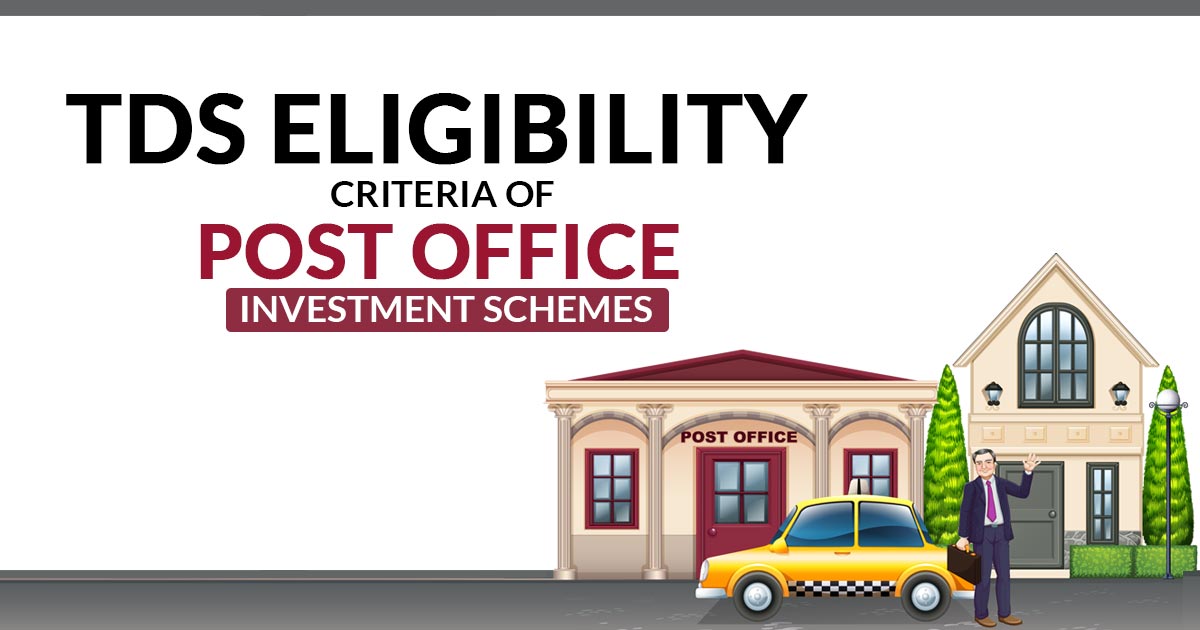
Various long-term and short-term investment plans are been provided by the post office however one should learn that not all the investment schemes would be free from tax since some schemes where interest provided through the post office would levy tax and no deduction is available under section 80C of the Income-tax Act, 1961.
Remember that only when the payment’s value exceeds the established threshold is TDS deducted from specific transactions. No TDS will be deducted if the amount does not go over the predetermined threshold.
What Does the Term TDS Specify?
TDS stands for Tax Deducted at Source. It was developed to deduct tax payments immediately from a person’s source of income. TDS is a method of tax collection employed by the government to reduce tax evasion by collecting money (either entirely or partially) right away rather than later.
Here are the post office investment schemes that have TDS deducted and those that do not.
Scheme 1: India Post-Time Deposit
The tax deduction would be qualified on the deposit amount (up to Rs. 1.5 Lakhs) beneath the 5 Years TD, under section 80C of the income tax act. The same directed that no tax deduction would be qualified for the deposits made into TD accounts within a year, two years, or three years.
TDS shall be subject to get deducted beneath the scheme.
Via such a plan, the interest received would levy to tax. You should include the interest income at the time of return filing beneath the income from the additional sources and pay the relevant income tax rate.
Scheme 2: India Post Recurring Deposit
If your interest income exceeds Rs. 40,000 for general residents, the bank or post office will deduct tax at source from the interest collected on your recurring deposit. If the sum is less than the threshold, no tax will be deducted from repeated deposits made at a bank or post office. The limit for older citizens to deduct TDS is Rs 50,000.
Scheme 3: Senior Citizen Savings Scheme (SCSS)
Under Section 80C for deposits, the advantage of tax would be available beneath the Senior Citizen Savings Scheme (SCSS). On interest earned exceeding Rs 50,000 p.a, the TDS would get deducted.
Scheme 4: Post Office Monthly Income Scheme Account (MIS)
Tax would be levied on the earned interest and there would be no deduction under section 80C for the deposits incurred. For the case of senior citizens, TDS would get deducted on the interest made for exceeding Rs 40,000 and Rs 50,000.
Scheme 5: Mahila Samman Savings Certificate
On the interest made for exceeding Rs 50,000 pa for senior citizens and Rs 40,000 for general citizens, the TDS would get deducted, under the Mahila Samman Savings Certificate.
Scheme 6: Kisan Vikas Patra (KVP)
Because KVP is ineligible for 80C deductions, the returns are levied to taxable. TDS, on the other hand, is not applied to withdrawals made post-maturity of the scheme.
Scheme 7: National Savings Certificates
Deposits of up to Rs. 1.5 lakh in National Savings Certificates are qualified for tax advantage under Section 80C of the Income Tax Act. Unlike fixed deposits, TDS does not apply to NSC interest amounts.
Scheme 8: Public Provident Fund Account (PPF)
Under the exemption category PPF does counts and the tax rebate shall be available under Section 80C for deposits (maximum Rs 1.5 lakh p.a.), and there is no tax on the interest.